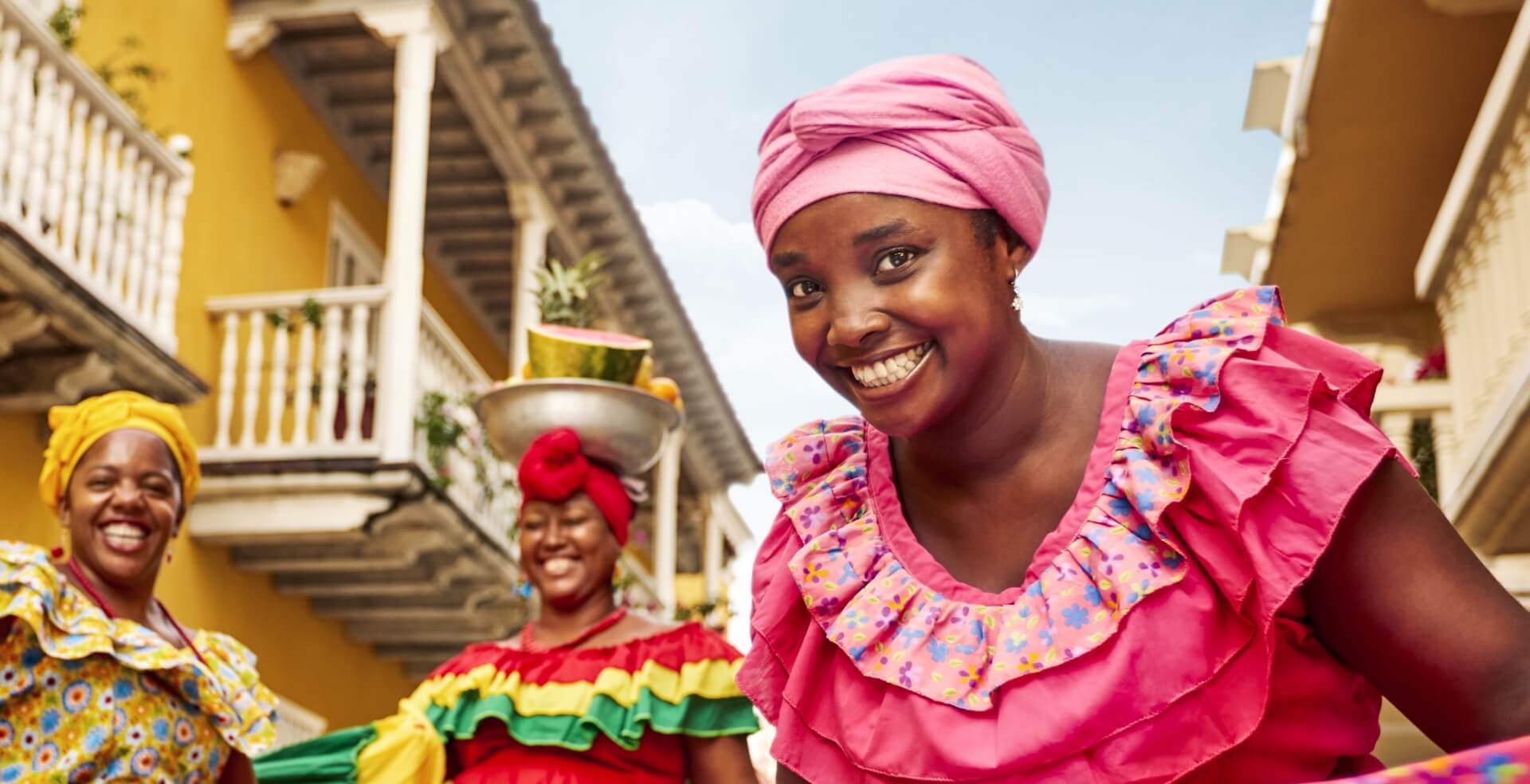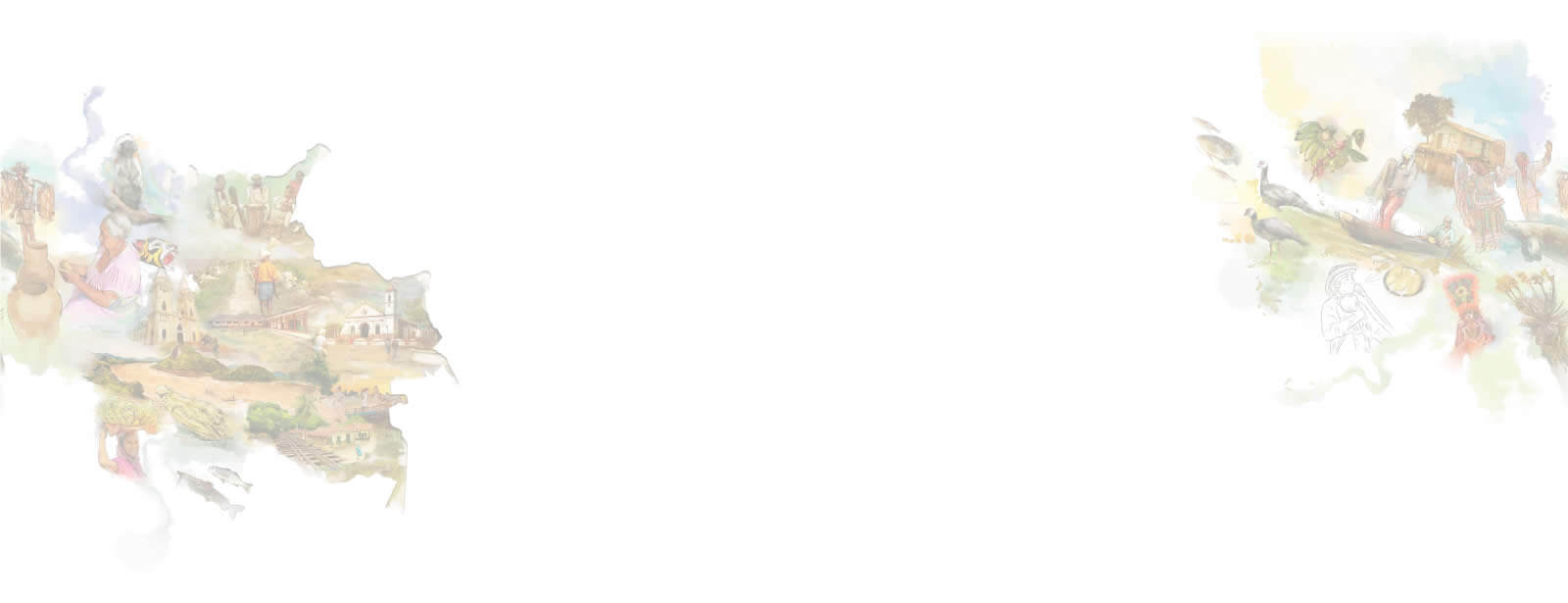Colombia is known for its picturesque villages but few are more vibrant and lovingly-decorated than the little town of Guatape.
This small Andean village in Antioquia, northwest Colombia, takes pride in its houses, which are painted in every color and adorned with paintings of plants, animals and references to local culture.
Guatape sits on the shores of the vast Peñol-Guatapé Reservoir, a man-made lake that adds to the town’s scenic atmosphere and is close to the giant Piedra del Peñol, a climbable granite stone that offers spectacular views of the surrounding area.
Here we explain the history of Guatape and why it’s a must-visit:

The history of Guatape
Before the Iberian conquerors reached the Antioquia area in the sixteenth century, this part of Colombia was inhabited by indigenous groups, and ruled by a leader known as “Guatape”, which is the origin of the town’s name.
Guatape means “stones and water” in Quechua.
The town was officially founded on October 4, 1811, and has evolved politically and economically throughout the years. It was once a farming village with an economy dependent on agriculture and mining activities.
In the 1970s, a large hydroelectric complex was built nearby, including the Punchiná Dam, which helped Guatape develop and led to the formation of its stunning scenery.
As well as being a big draw for tourists, the town has since become one of the most important electric production centers in the country.
You may also be interested in:
Things to do in Guatape
Climb La Piedra del Peñón
>This 220 meter-high rock, just two kilometers from Guatape, is an imposing sight and hundreds of visitors set out every day to try and make their way to the top.
If you want to enjoy the best views of the surrounding area you will have to earn it and climb the 740 numbered steps to the summit, where you’ll be rewarded with a viewing spot with excellent views of the lake and its tiny islands.
Halfway through the climb visitors will also see a shrine to the Virgin Mary, and there are souvenir shops selling traditional handicrafts as well as a popular local restaurant.
The Peñón de Guatape is estimated to be around 65 million years-old and was worshipped by the Tahamí, the indigenous group that once inhabited the region. They referred to the stone in their language as ‘mojarrá’ or ‘mujará’.
The rock became such a significant landmark that it was declared a national monument by the Colombian government in the 1940s and, in the 1950s, the first recorded climb was made, when three climbers, Luis Eduardo Villegas López, Pedro Nel Ramírez, and Ramón Díaz, took five days to summit using sticks attached to the rock’s wall.
A new species of plant, Pitcairnia heterophylla, was later found on top.

Fuente: Viajeros ocultos
Practice extreme sports and watersports
Once you’ve warmed up your muscles by climbing the La Piedra del Peñón steps, consider trying some of the different sports available in the area.
There is something for everyone, from those intent on adventure sports to those who prefer something a little more peaceful that offers scenic views.
The tiny islands on Peñol-Guatapé Reservoir are one of its most distinctive aspects, and can best be explored by kayaking, canoeing and paddle boarding.
There are also great opportunities to spend a day or two sailing on the lake, as well as the chance for the adventurous visitors to go wake-boarding and water-skiing.
Some visitors opt to go rappelling down one of the nearby waterfalls, while others choose to go on a hike and admire the local wildlife.
If the air is more your style, consider hang-gliding or paragliding to enjoy a birds-eye view of Guatape, the Peñón de Guatape and the reservoir that surrounds them.
Explore the murals in Guatape town
Guatape is famous for its brightly-painted murals, known as ‘zocalos’ and it is well worth taking some time to explore them.
The murals are found on the lower parts of the town’s homes and buildings and, as well as offering charming depictions of local life, many have hidden meanings related to a local product or the beliefs of the person who lives in the property.
Others relate the flora and fauna of the nearby area or pay homage to the town’s agricultural past.
All of the zocalos are eye-catching and make for excellent photographs.

Enjoy the world’s finest coffee
Is found in the heart of the Colombian coffee district. You travel east from Medellin to Guatape and, of course, no trip would be complete without a delicious cup of Colombian coffee.
Head out early in the morning to the small central square called Plaza de los Zocalos, and enjoy your coffee in the fresh air and sunshine, surrounded by the kaleidoscope of color that is so central to this small town’s identity.

How to get to Guatape from Medellin
Take the bus from Medellin’s Terminal del Norte. It takes about two hours.

You may also be interested in: Behind the charms of the most welcoming country in the world















